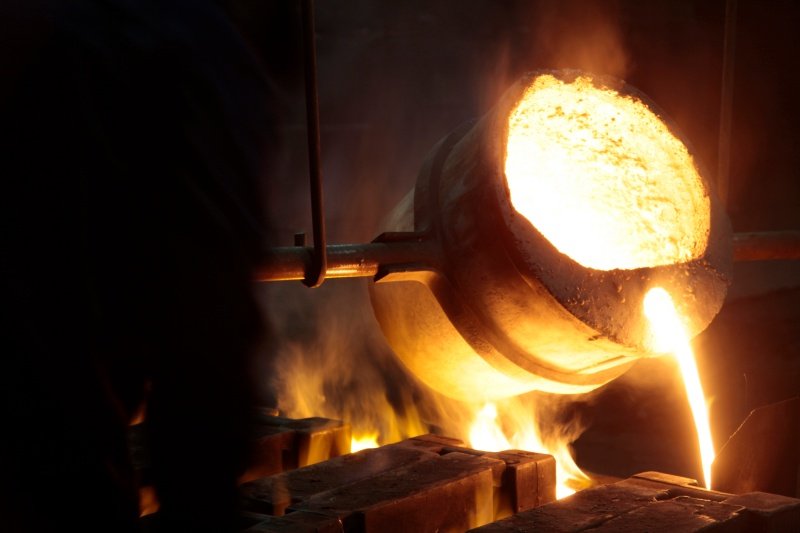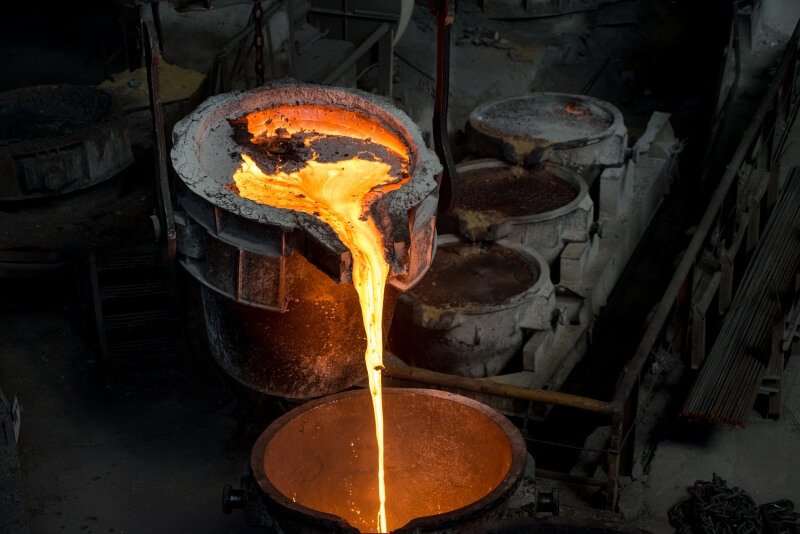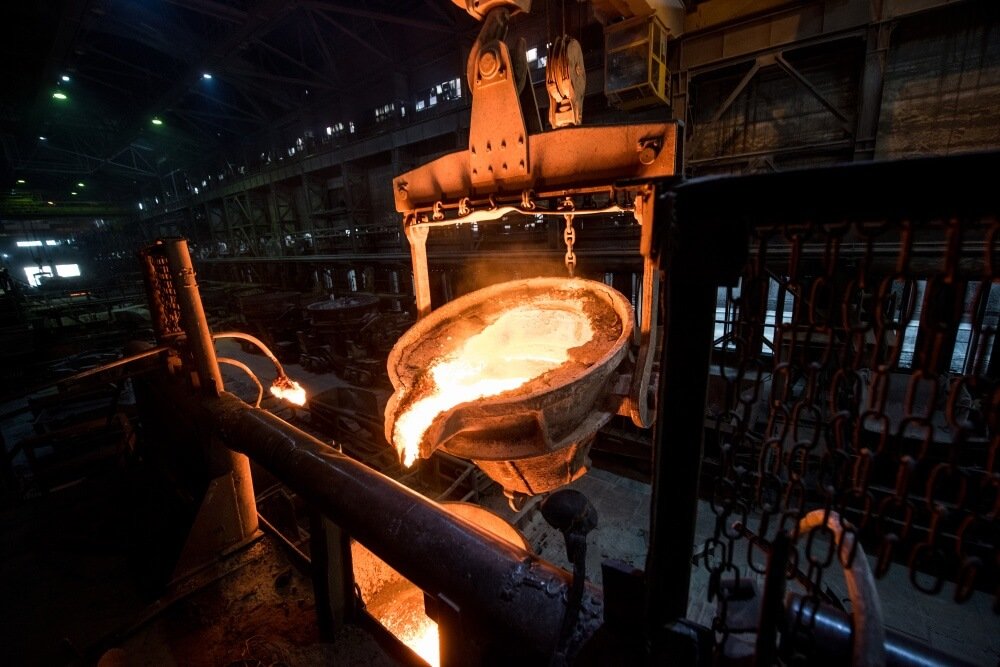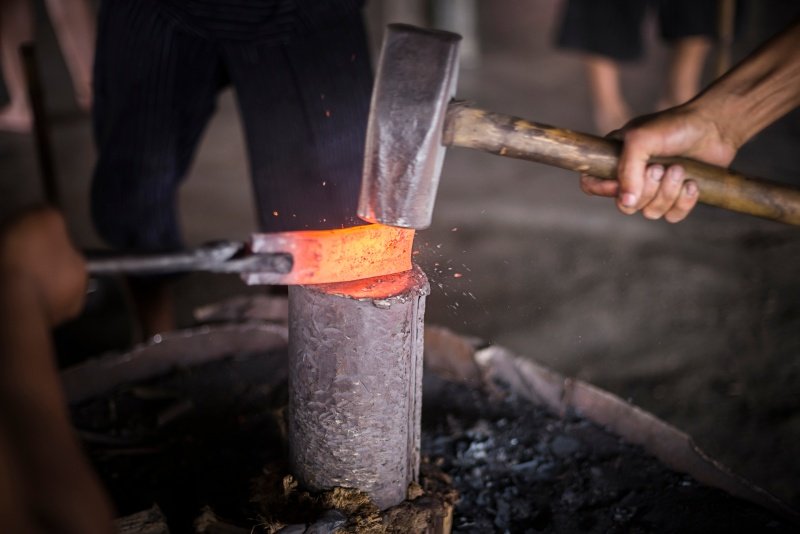Selecting the right aluminum casting materials for a die-casting project is a high-stakes decision that directly affects success. A poor choice can result in part failures, unexpected budget overruns, and costly production delays. Imagine a carefully engineered component cracking under stress, corroding faster than expected, or weighing too much for its intended use. These setbacks drain profits and damage your reputation, all from one early misstep. This guide simplifies the decision-making process by exploring the properties and applications of key aluminum casting materials, giving you the clarity to make an informed, cost-effective, and reliable choice.
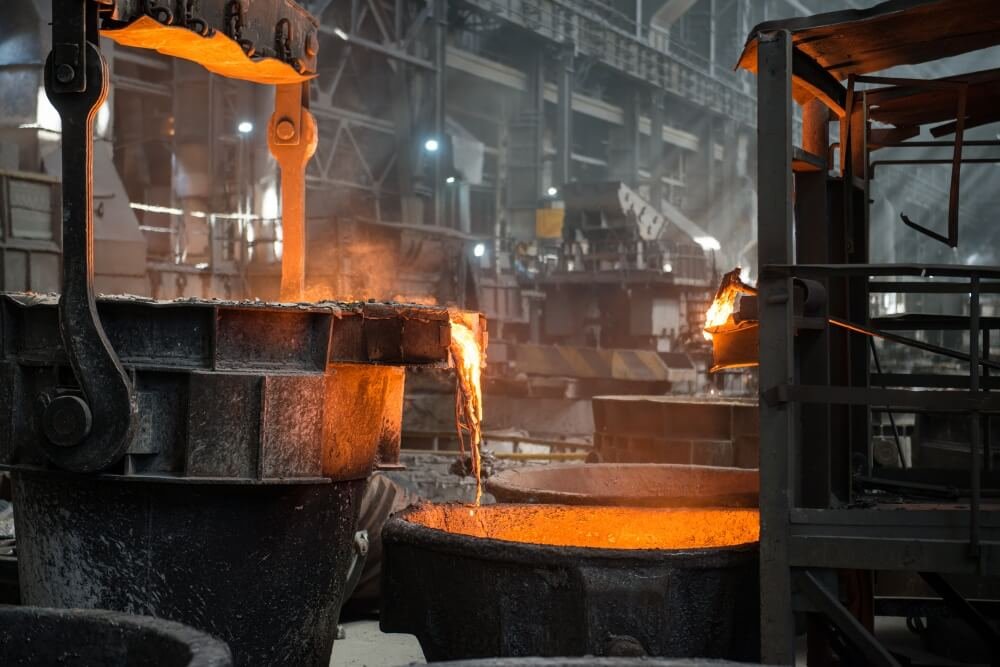
1. Why use aluminum casting materials?
What are the core benefits?
Aluminum alloys offer a fantastic combination of properties that make them ideal for a wide range of die-casting applications. You get an excellent strength-to-weight ratio, meaning your parts are both strong and light. This unique balance is difficult to achieve with other affordable metals.
- High strength-to-weight ratio
- Excellent corrosion resistance
- Great thermal and electrical conductivity
Here’s the deal:
How do they improve part performance?
By using aluminum, you can design parts that are lighter without sacrificing strength, which is critical for automotive and aerospace sectors. Their natural resistance to corrosion ensures a longer service life for components exposed to the elements. This inherent durability means your products perform better and last longer in the field.
But wait, there’s more:
What makes them cost-effective?
Aluminum is an abundant and affordable raw material, which helps keep your initial production costs down. Furthermore, its lower melting point compared to steel results in longer tool life and faster cycle times. These manufacturing efficiencies translate directly into lower costs per part.
Key Takeaway: Aluminum alloys provide an optimal blend of performance and value. They enable the creation of lightweight, strong, and corrosion-resistant parts at a competitive price point, making them a default choice for many industries.
| Benefit | Impact on Your Project |
|---|---|
| Lightweight | Improves fuel efficiency and handling; easier to manage. |
| Strength | Ensures part durability and reliability under stress. |
| Cost-Effective | Lowers material and production costs, increasing ROI. |
2. Top aluminum casting materials compared
What is A380 aluminum alloy?
A380 is the workhorse of aluminum die casting, known for its excellent balance of castability, mechanical properties, and thermal conductivity. It provides high strength and good corrosion resistance at a very competitive cost. This makes it a go-to choice for a massive variety of components.
- Great for engine blocks
- Used in electronic housings
- Ideal for structural parts
Look closer:
How does ADC12 differ from A380?
ADC12 is an equivalent to A380, very popular in Asia, and shares most of its beneficial properties like good strength and machinability. While extremely similar, some foundries note slight differences in fluidity during casting. For most projects, you can consider them interchangeable.
Think about it this way:
When should you use A360 alloy?
You should choose A360 when your part requires superior corrosion resistance and strength at high temperatures. It offers better pressure tightness and ductility than A380. This makes it ideal for components in harsh environments or those subject to high stress.
Key Takeaway: While A380/ADC12 is a versatile default, specialized alloys like A360 offer enhanced performance for demanding applications. Choosing between them depends on whether your project needs a balanced workhorse or a high-performance specialist.
| Alloy | Key Characteristic | Best For |
|---|---|---|
| A380/ADC12 | Balanced properties, cost-effective | General-purpose components |
| A360 | High corrosion & temp resistance | Harsh environments, pressure-tight parts |
3. Strength of aluminum casting materials
How is tensile strength measured?
Tensile strength indicates the maximum stress a material can withstand while being pulled apart before breaking. It’s measured in megapascals (MPa) and is a critical metric for any part that will bear a load. A higher number means a stronger material under tension.
Now, for the interesting part:
Which alloy has the best hardness?
Hardness measures a material’s resistance to surface indentation and scratching, typically measured on the Brinell (HB) scale. While zinc alloys are generally harder, within aluminum alloys, A380 offers a solid hardness of around 80 HB. This provides good wear resistance for many applications.
What does this mean in practice?
What about impact resistance?
Impact resistance is a material’s ability to absorb shock and energy without fracturing. Although aluminum alloys have lower impact strength than zinc, A360 is known for its higher ductility. This makes it a better choice than A380 for parts that may experience sudden loads.
Key Takeaway: The strength of a part is multi-faceted. You must balance tensile strength for load-bearing, hardness for wear, and impact resistance for durability, selecting an alloy that meets your most critical strength requirement.
| Property | A380 (Typical) | A360 (Typical) |
|---|---|---|
| Tensile Strength | ~317 MPa | ~324 MPa |
| Hardness | ~80 HB | ~75 HB |
| Impact Suitability | Fair | Good |
4. Thermal aluminum casting materials data
What are their melting points?
Aluminum alloys have a melting range, typically starting around 550-580°C (1022-1076°F). This relatively low melting point is advantageous in die casting. It requires less energy to melt and is less aggressive on the steel molds, leading to longer tool life.
Here’s the scoop:
How do they conduct heat?
Aluminum is an excellent thermal conductor, making these alloys perfect for parts that need to dissipate heat. This is why you’ll find them used extensively in computer heat sinks and LED lighting housings. The specific conductivity varies slightly based on the alloy composition.
Here’s the key takeaway:
What is thermal expansion?
Thermal expansion refers to how much a material expands when heated. Alloys like Al-Si8Cu3 have a low coefficient of thermal expansion, making them dimensionally stable at high operating temperatures. This is crucial for parts in engines and aerospace applications.
Key Takeaway: The thermal properties of aluminum alloys are a key advantage. Their good conductivity is ideal for heat management, while their low melting points and thermal stability make them both easy to manufacture and reliable in high-temperature environments.
| Thermal Property | Importance in Die Casting |
|---|---|
| Melting Point | Lower temps lead to longer tool life and lower energy costs. |
| Conductivity | Excellent for parts that need to dissipate heat, like housings. |
| Expansion | Low expansion provides dimensional stability in operation. |
5. Corrosion of aluminum casting materials
How do aluminum alloys resist rust?
Aluminum naturally forms a thin, tough layer of aluminum oxide on its surface when exposed to air. This passive layer acts as a barrier, protecting the metal underneath from corrosion. It effectively prevents the kind of rust you see on steel.
Want to know the best part?
Which alloy is best for marine use?
For marine or other highly corrosive environments, A360 is a superior choice over A380. Its lower copper content enhances its natural corrosion resistance. This makes it more durable when exposed to saltwater or other harsh chemicals.
You might be wondering:
Do coatings improve corrosion resistance?
Absolutely. Processes like anodizing and powder coating can dramatically boost corrosion resistance. Anodizing thickens the natural oxide layer, while powder coating provides a durable polymer barrier. These finishes add an extra layer of protection for extreme conditions.
Key Takeaway: Aluminum’s inherent corrosion resistance is a major benefit, but not all alloys are equal. For standard applications A380 is fine, but for harsh environments, choosing a higher-resistance alloy like A360 or adding a protective coating is a smart investment.
| Factor | A380 Resistance | A360 Resistance | With Coating |
|---|---|---|---|
| General Use | Good | Excellent | Superior |
| Marine/Salt | Fair | Good | Excellent |
6. Cost of aluminum casting materials
What drives raw material prices?
The price of aluminum alloys is influenced by the global commodity market and the cost of alloying elements like silicon and copper. For example, alloys with higher copper content can sometimes be more expensive. A380 is widely produced, which helps keep its cost competitive.
Here’s the reality:
How does tooling life affect cost?
The abrasiveness of an alloy impacts how long the expensive steel die cast mold will last. Softer, more fluid alloys cause less wear, extending tooling life over hundreds of thousands of cycles. This significantly lowers the effective cost per part in high-volume production.
What’s the real story?
Which alloy offers the best value?
For the vast majority of projects, A380 offers the best overall value. It combines low raw material cost with excellent castability and balanced properties. This combination makes it the most cost-effective choice unless a specific, superior property is required.
Key Takeaway: The total cost of a die-cast part isn’t just the material price; it’s a combination of raw material, manufacturing efficiency, and tooling longevity. A380 consistently provides the best balance, delivering performance and value for high-volume production.
| Cost Factor | Description | Best Value Alloy |
|---|---|---|
| Material Price | Cost of the raw alloy ingot. | A380 |
| Tooling Life | How many parts a mold can make. | A380 |
| Overall Value | Balance of cost and performance. | A380 |
7. Automotive aluminum casting materials
Why is aluminum used in engines?
Automakers rely on aluminum for parts like engine blocks and transmission cases to reduce vehicle weight, which improves fuel efficiency. Its excellent thermal conductivity also helps dissipate heat effectively. A380 is a common choice for these powertrain components.
- Lighter weight for better MPG
- Excellent heat dissipation
- Good strength for durability
Let’s break it down:
Which alloys for structural parts?
For structural components like chassis parts and shock towers, high-strength aluminum alloys are essential. Alloys are chosen for their ability to provide rigidity and absorb impact energy while keeping weight low. This enhances both safety and vehicle performance.
Key Takeaway: In the automotive industry, aluminum is indispensable for creating lighter, more efficient, and better-performing vehicles. The choice of specific aluminum casting materials is tailored to meet the demanding requirements of powertrain, chassis, and structural applications.
| Automotive Application | Key Requirement | Common Alloy |
|---|---|---|
| Engine Blocks | Heat dissipation, strength | A380 |
| Structural Frames | High strength-to-weight ratio | Specialized Al-Si alloys |
8. Aerospace aluminum casting materials
Is die casting used for aircraft?
Yes, die casting is used for many non-critical aerospace components where weight reduction is paramount. You’ll find die-cast aluminum parts in cabin fittings, electronic housings, and support brackets. Every gram saved contributes to better fuel efficiency and performance.
Let me explain:
What are key aerospace properties?
The primary driver for material selection in aerospace is the strength-to-weight ratio. Alloys like Al-Si8Cu3 are used because they offer high strength in a lightweight package. Strong fatigue resistance and corrosion resistance are also critically important for safety and longevity.
Key Takeaway: For aerospace applications, aluminum casting materials are selected almost exclusively for their ability to deliver maximum strength with minimum weight. The right alloy helps build safer and more efficient aircraft.
| Aerospace Property | Why It’s Critical | Suitable Alloy Type |
|---|---|---|
| Strength-to-Weight | Reduces fuel consumption and increases payload. | High-strength Al-Si |
| Fatigue Resistance | Ensures long-term durability under cyclic loads. | Specialized aerospace grades |
9. Finishing aluminum casting materials
Can you anodize die-cast parts?
Yes, but the finish quality depends heavily on the alloy’s silicon content. Alloys with lower silicon produce a clearer, more decorative anodized finish. High-silicon alloys like A380 can be anodized for protection but may result in a grayish, less cosmetic appearance.
Here’s the kicker:
What are the best painting methods?
Powder coating and wet painting are both excellent options for aluminum die-cast parts. Powder coating is particularly durable and provides a thick, even layer of protection. Proper surface pretreatment is essential for ensuring strong paint adhesion.
You might be surprised:
Is polishing a viable option?
Polishing is a great way to achieve a brilliant, mirror-like finish on aluminum parts. It is a labor-intensive process, making it best suited for cosmetic components where appearance is a top priority. The final result can be visually stunning.
Key Takeaway: You have many finishing options for aluminum parts, but the best choice depends on your goal. Consider anodizing for protective finishes, painting for color and durability, and polishing for high-end cosmetic appearances.
| Finishing Method | Best For | Consideration |
|---|---|---|
| Anodizing | Corrosion resistance, wear | Silicon content affects appearance. |
| Powder Coating | Durability, color options | Requires proper surface prep. |
| Polishing | High-gloss cosmetic look | Can be labor-intensive and costly. |
10. Choosing aluminum casting materials
How to define your requirements?
Start by listing the non-negotiable needs of your part. What mechanical loads must it withstand? What is its operating environment? Answering these questions first will narrow down your options significantly and point you toward the right family of alloys.
- Mechanical (strength, hardness)
- Environmental (temperature, corrosion)
- Aesthetic (finish, appearance)
First things first:
How to compare trade-offs?
No single alloy is perfect for everything, so you must balance competing factors like cost and performance. For example, is the superior corrosion resistance of A360 worth the extra cost over A380? This is where you align your material choice with your budget and performance goals.
Here’s how to think about it:
When should you consult an expert?
You should always consult a die-casting expert before finalizing your material. Their experience can help you avoid common pitfalls and validate that your chosen alloy is optimal for both your application and the manufacturing process. This small step can save you significant time and money later.
Key Takeaway: A structured decision-making process is key to successful material selection. Define your needs, weigh the trade-offs between cost and performance, and always leverage expert advice to confirm your choice.
| Decision Step | Action |
|---|---|
| 1. Define Needs | List mechanical, environmental, and cost requirements. |
| 2. Weigh Trade-offs | Compare alloys based on your priority list (e.g., cost vs. strength). |
| 3. Consult Expert | Get a final review from a manufacturing partner before production. |
Conclusion
You came here seeking clarity in the complex world of die-casting materials, and this guide has provided a clear roadmap. By understanding the properties and applications of key aluminum casting materials, you are now equipped to avoid costly mistakes and select the optimal alloy for your project’s unique demands. Knowledge is the first step, but execution is everything. If you’re ready to move forward, our expert engineers are ready to review your design and provide a no-obligation quote. Let us help you turn your material choice into a manufacturing success.
Frequently Asked Questions (FAQ)
- How do I know if I should choose an aluminum or zinc alloy? Choose aluminum when you need lightweight parts, good corrosion resistance, and high-temperature performance. Opt for zinc when you need superior strength, hardness, and fine details for parts that require plating or a high-quality finish.
- Can I use A380 aluminum for parts that need to be welded? Welding A380 is generally not recommended. Its high silicon and copper content can lead to cracking during the welding process, compromising the integrity of the part.
- What is the most cost-effective aluminum casting material for high-volume production? A380 (and its equivalent, ADC12) is overwhelmingly the most cost-effective choice for high-volume production due to its low material cost, excellent castability, and good overall balance of mechanical properties.
- How do I specify the material I need when requesting a quote? Clearly state the standard alloy designation on your technical drawings and in your Request for Quote (RFQ) documents. For example, specify “Material: Aluminum A380.”
- Can my die-cast aluminum part have a food-safe coating? Yes. While the base aluminum alloy itself is not considered food-safe, the part can be treated with a certified food-grade powder coat or other specialized coating to make it safe for contact with food.

